The man who has photographed every train station in Great Britain
- Published
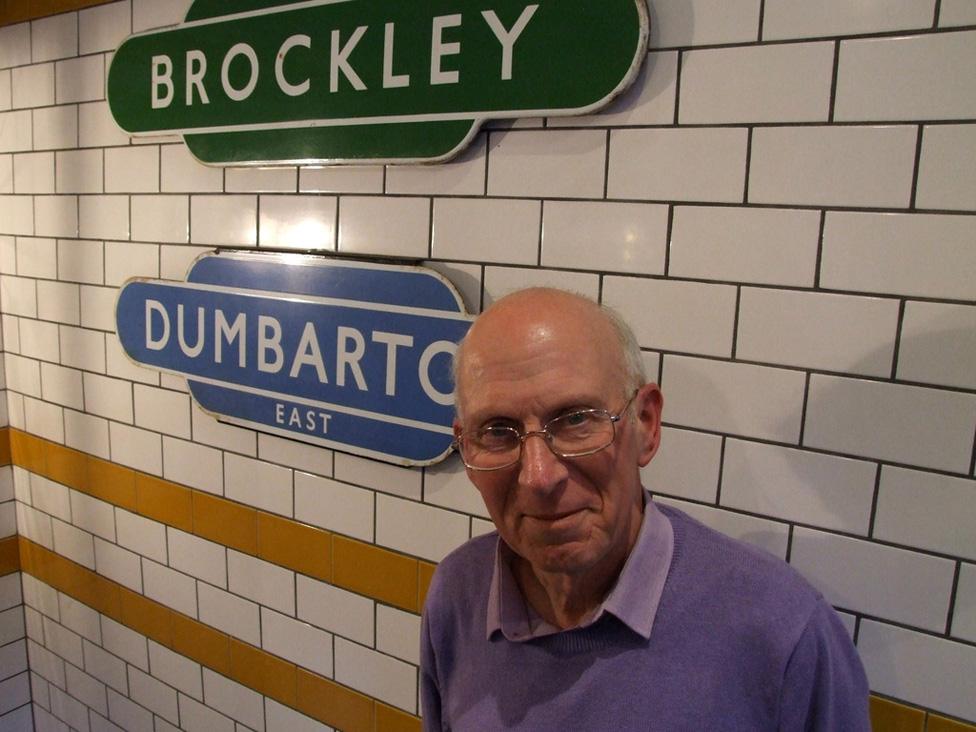
Passengers on the 15:52 from Norwich to Liverpool Lime Street may not have noticed the man with the camera at Manea station.
Manea is a small stop in Cambridgeshire, not far from Peterborough. Two platforms. Easily missed.
The man with the camera was David Brewer, from Chorley in Lancashire. And when he photographed the 15:52 from Norwich, his odyssey was over.
He had completed the set. He had taken a picture of a train in every railway station in Great Britain.
There are more than 2,500 in total. From Penzance to Thurso, Abbey Wood to Ystrad Rhondda, he had seen them all. And he had photos to prove it.
Some stations were easier to reach than others. Redcar British Steel, for example, has two services per day - one in the morning, and one, in the other direction, in late afternoon.
David decided to get there by bus, and leave by train. One problem - the station is on private land owned by the steel firm, and isn't open to non-employees.
"I got off the bus and walked towards the steel works, but they weren't going to let me in," he says.
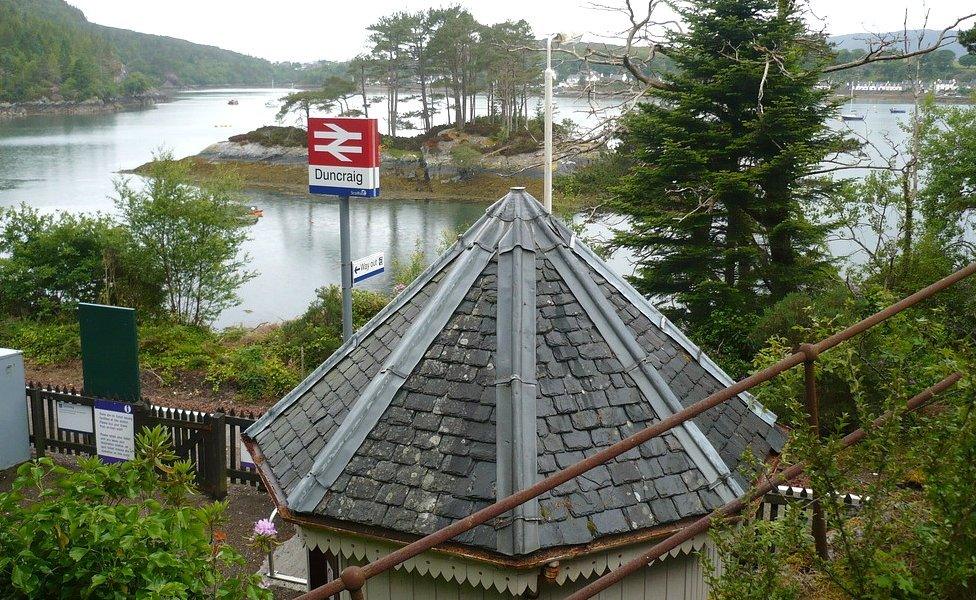
The remote Duncraig station on the shores of Loch Carron
"I spoke to the gatekeeper and explained what I was doing. I had to persuade him.
"Eventually, he went to an office, came back, and said he'd let me in. I took my photos, waited an hour, and got the only train out in the evening."
Like Redcar British Steel, Shippea Hill in Cambridgeshire has a sparse service. In order to leave by train, David arrived in a taxi from Ely.
"Twenty pounds," he says, almost wincing. "It was either that or walk 10 miles."
The station at Teesside Airport has two trains a week, both on Sundays, meaning David arrived and departed on bus. "And the station is a good 15 minute walk from the terminal," he says.
And so, the obvious question. Why?
"My father worked on the railways all his life, on the controls at Preston station," says David, 68.
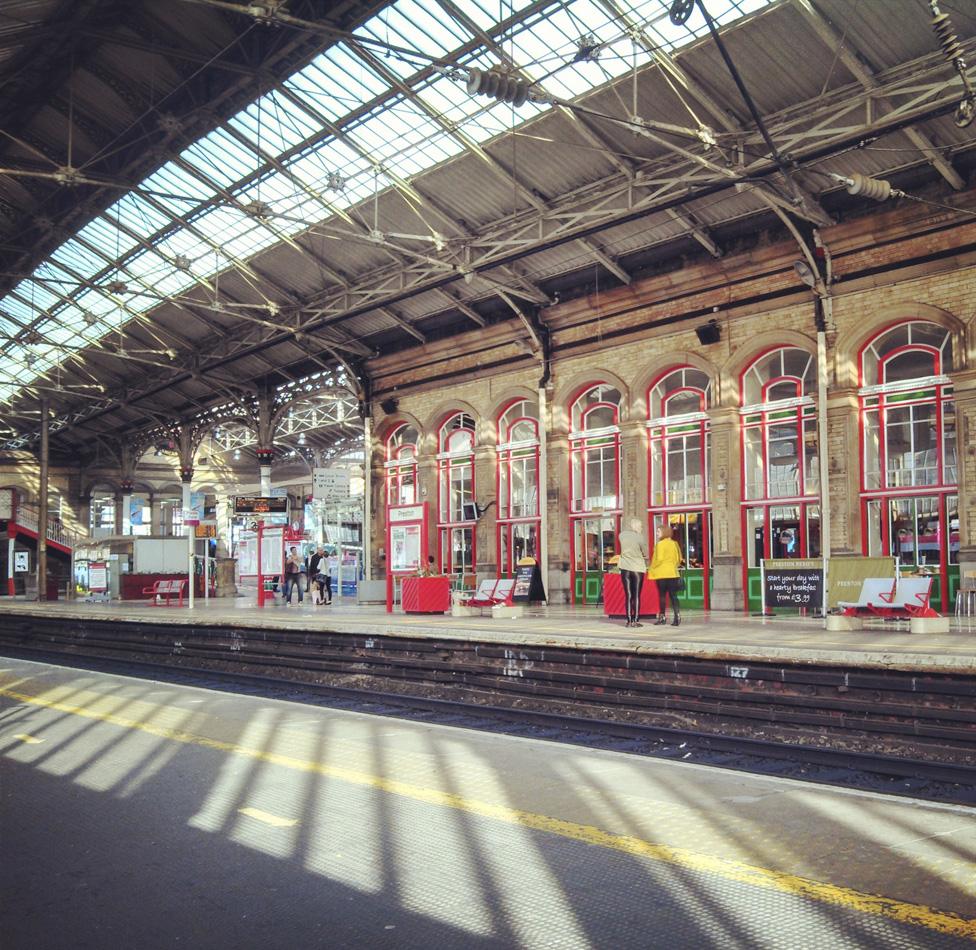
Preston station, where Brewer's father worked
"Three or four times a year we'd get the train down to London to see relations. That probably started me off.
"As a boy I was a keen trainspotter, but I wasn't satisfied with sitting on Preston station, getting a few. I had to go to the best engine sheds. I had to go round the country, getting as many as I could."
As an adult, David ran a business selling music records. He closed the firm in 1998, and, like his father, went to work on the railways.
He was turned down for a conductor's job on Virgin Trains. "They probably thought I was too old," he says. But he became a ticket office clerk at Leyland station, and then Chorley.
He retired in 2007, aged 60. Having travelled on every line in Britain, and taken some pictures, he set himself a challenge - to photograph every station.
"And if I make my mind up to do something, I'm going to do it," he says.
David kept meticulous, handwritten notes of his adventures, drawing tables to log where he'd been. For example, he knows that he photographed 487 new stations in 2008, on 44 separate trips.
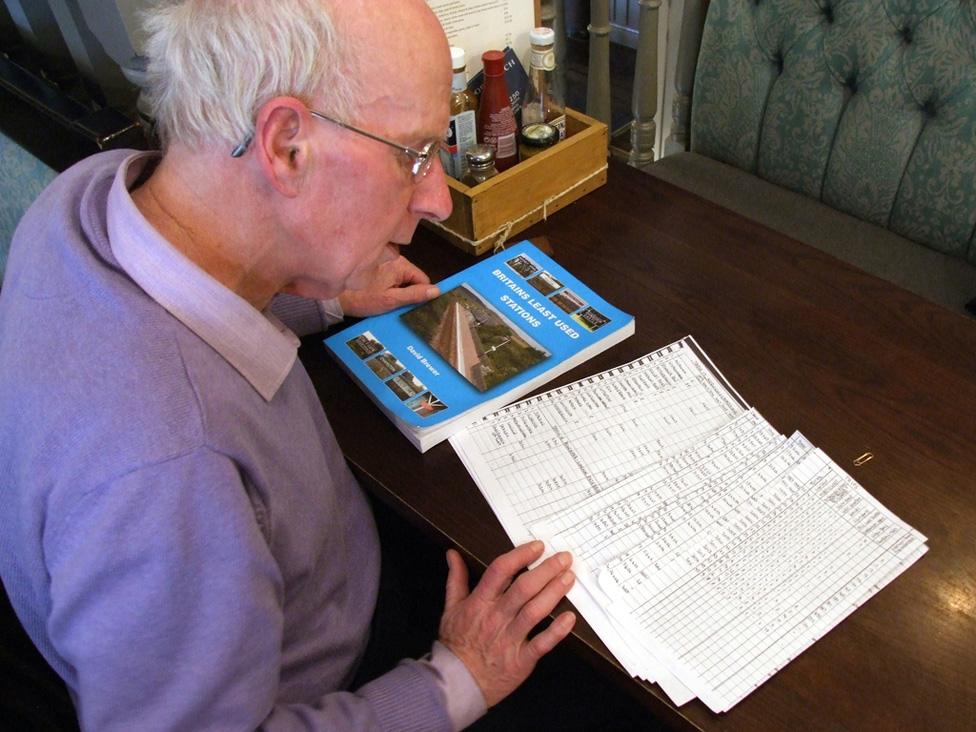
The photos are printed and kept in timetable order. So, in the national timetable, table one is London Fenchurch Street to Shoeburyness and Southend. Therefore, picture one is Fenchurch Street, picture two is Limehouse, and so on. Some get published in the magazine, Today's Railways.
What does his wife, Shirley, make of it?
"I have asked her this," says David. "She's quite happy for me to be out of the house. She's not really interested in railways herself."
The trips are well planned and budgeted. As a former employee, David gets free travel on Northern trains, and rover tickets - which allow unlimited travel for seven or 14 days - keep costs down.
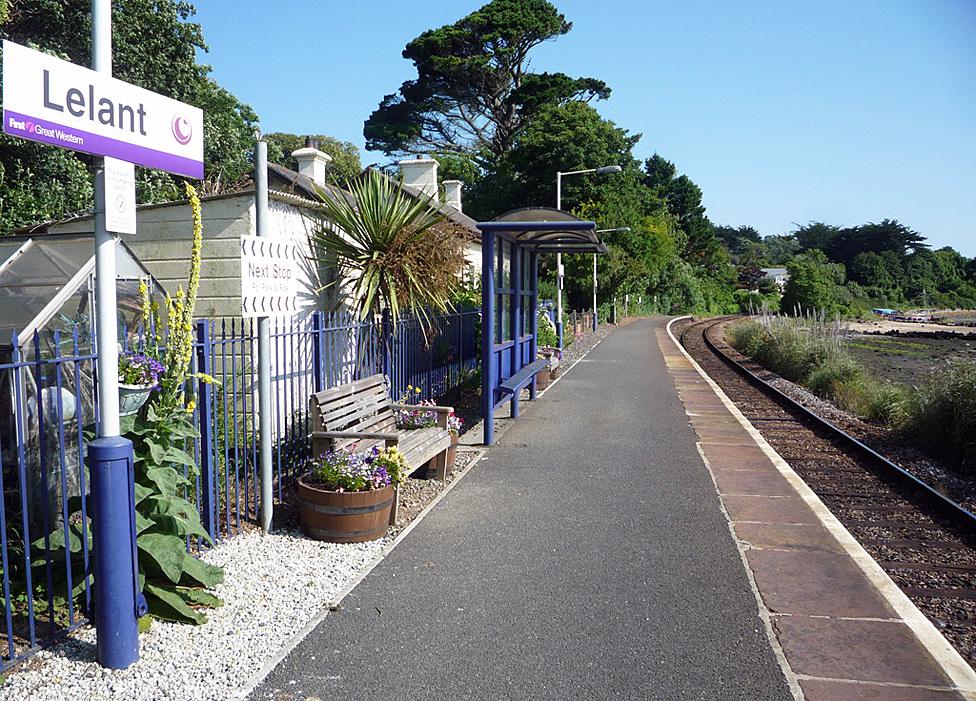
Lelant in Cornwall is a request stop - so travellers need to tell the guard they want to get off
David also combines railways with his other hobbies, including tennis - he's been to every Wimbledon since 1965 - and Blackpool FC.
"We keep getting relegated," he says. "But it means I get to see new places."
Last year, he self-published a photographic book, Britain's Least Used Stations. It takes us from Teesside Airport (eight passengers in 2013/14) to Altnabreac in the Highlands (138 passengers) to Sugar Loaf in Powys (240 passengers).
These stations - the unseen, unused, underdogs of the national network - are his favourites.
"If I can pick two, I'll go for Dolau on the Heart of Wales line, and Chathill, which is north of Newcastle," he says. "Both lovely stations, both very well looked after."

Dolau station on the Heart of Wales line
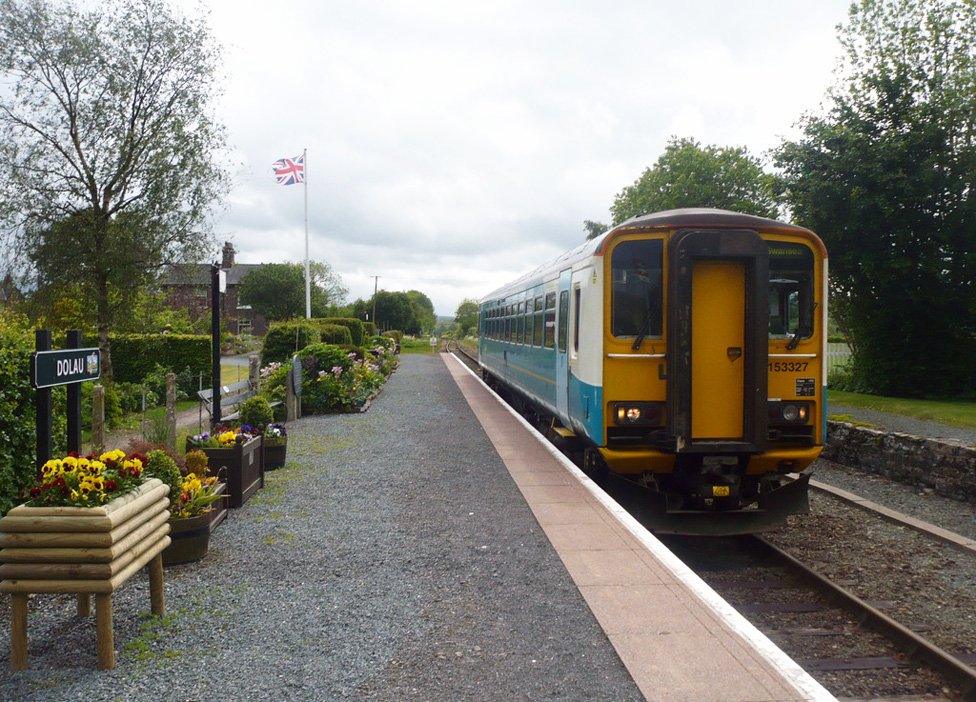
Dolau is an unstaffed station
Likewise, his favourite lines are remote - the West Highland Line and the Kyle of Lochalsh Line, in northern Scotland.
David visited Manea in 2011. Although new stations, and sometimes new lines, do open - "I visited the Borders Railway on the second day it opened" - he needed new worlds to conquer.
And so, he turned his attention to the London Underground. He's now photographed every tube station, plus all the stops on the Docklands Light Railway, Croydon Tramlink, Midland Metro, Nottingham Tram, Manchester Metrolink, Sheffield Supertram, Tyne and Wear Metro, and Edinburgh Tram.
After publishing his book, one reader got in touch to say he'd also visited every station in Britain. But - once you include the trams and light railways - it's thought no-one is more travelled than David.
"You could say there's not a lot of point in it," says David. "But it's my hobby. I like travelling, and I like travelling by train.
"People say - 'Oh, you went to such and such a place - what did you do there?' And I say - 'Well, I stood on the station and took photos.'
"Occasionally I'll walk round the town, if I have time to spare and it's an interesting place. But I'm there to photograph the station. That's what I'm there for."

More from the Magazine
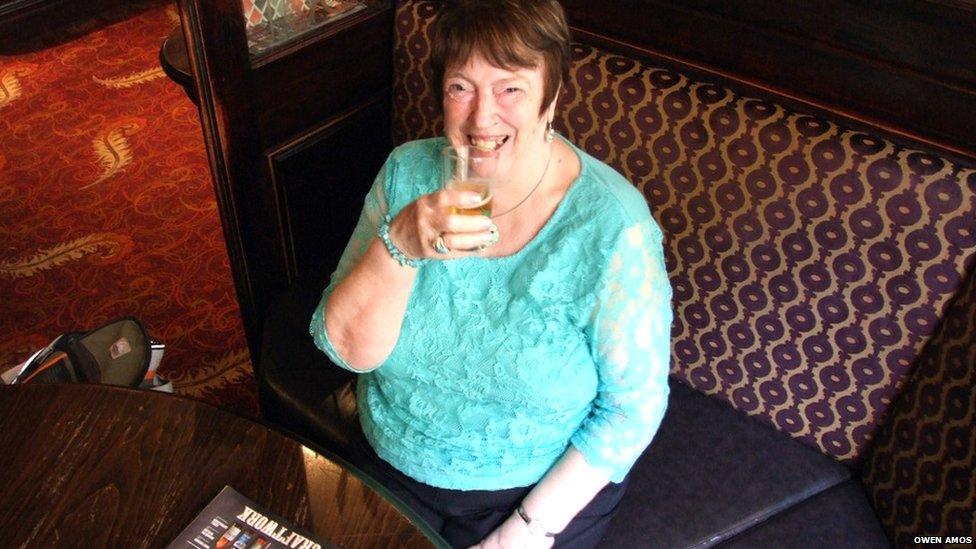
Mags Thomson travels across the country collecting Wetherspoon's
Mags Thomson has completed an extraordinary mission to visit every pub in one massive chain.
For 66-year-old Mags it all began at Reading railway station in 1994. Her husband was a railway enthusiast - bored with standing around cold platforms, she decided to wait for him in a pub. It was a Wetherspoon's. The hobby was born.

Subscribe to the BBC News Magazine's email newsletter to get articles sent to your inbox.